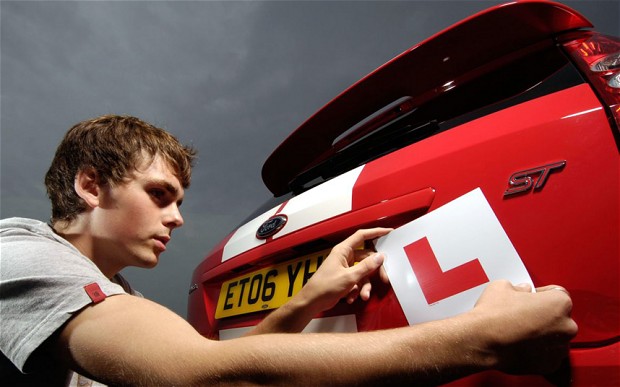Published on the 23/02/2016 | Written by Owen McCall

My daughter Sarah has just passed her learner’s driving licence…
It is a very exciting time for her and a somewhat nervous time for me and her mother. The day after she passed I took her out for her first ever drive. I decided that having her actually drive on the road with other cars was a step too far for the first time, so I drove us to the North Shore Events Centre. There were no events on this day so what we had was a large empty parking lot set out in three connected sections that she could drive around with no real risk of hitting anything. The lesson went well and as I drove home my mind began to drift towards work. I have been thinking a lot lately about the idea of digital competence. As I have said before I reckon that if you want to be a digital leader then one of the prerequisites is that your team needs to be digitally competent and, as I have said in previous blogs, organisations are not consistently investing in the digital competence of their team. It was about then that a weird thought struck me. What would happen if we taught people to drive the way we teach them to use technology? It wasn’t a pleasant thought. All I could foresee was accidents, deaths and danger. So I flipped the thought. What if we taught digital competence the way we teach people to drive. That seems to have some potential. In New Zealand it takes about two and a half years and four stages to get your full driver’s licence. I wondered what if we applied this to building digital competence. It could look something like this: At the end of the two-year period you become a fully licensed driver and fully digitally competent. For most this will be the end of the process. For some however, they will wish to pursue additional skills such as being a paid driver whether that is trucks, buses or taxis. If so, then there are additional steps required in the process to become licensed for these activities. Maybe my analogy isn’t perfect, but there is no doubt that a more planned approach to developing digital competence, similar to that which we take to licence drivers, is warranted if you wish to develop your organisation into a digital leader. In the meantime, I’d be interested to know what your organisation is doing to support the development of digital competence – unless I have not survived my next driving lesson with my daughter, that is! Passionate about using technology to make a real difference to businesses, communities, families and individuals, Owen McCall has focused his career on understanding and answering this question: “How do you harness the power of IT to deliver value?”
Driving
Stage one of learning to drive is learning the road code. It doesn’t involve a car at all, rather the focus is learning the rules of the road. Learning the rules is vital to keep yourself and all other drivers safe. Having successfully learnt the road code you then sit and (hopefully pass) a test and earn your learner’s licence and your ‘L’ plates.Digital
An equivalent phase in digital competence could be learning about digital. It might include how to keep yourself safe online (eg virus protection, strong passwords, the need for patching and how to recognise suspicious activity) and some basics about how digital works end-to-end (user device, networks, how to connect) applications etc.
Stage two is where you begin to learn the practical skills of driving. Your learning is guided under the supervision of a fully qualified driver. You are not permitted to drive by yourself and you also need to display those ‘L’ plates so those around you know that you are learning and can provide you with a bit more latitude. At the end of stage 2 your practical driving skills are tested and if you pass this practical driving test you receive your restricted licence and move to the next stage.
The digital equivalent would be learning how to actually use your digital devices and applications to get work done. As with driving, this phase could be done under the supervision of a competent user who will guide and mentor you in best practices and in how to turn the theory you learnt in phase one into practical use.
Under a restricted licence you can drive solo but only under specific circumstances designed to keep drivers away from the most dangerous situations. These include driving at night and with friends who can be distracting and encourage “stupid” activities.A restricted licence lets you get most of the benefits of being a licensed driver and allows you to continue to build your skills while ensuring you remain relatively safe.A restricted licence typically lasts two years however you can shorten this by successfully completing advanced study aka a defensive driving course.
The next phase of digital competence is more about learning to innovate rather than the driving equivalent of remaining safe. Having learnt the basic skills required to get work done digitally the next phase is about using your digital tools to solve and complete ever-increasingly complex situations and to learn how to identify opportunities to innovate and create new tools. Innovation may include devising better ways to complete tasks, improving decision making by identifying new sources or presentation of data or by devising new ways to engage with customers, your team or other key stakeholders.As with driving, maybe this phase could be shortened by committing to learning advanced skills in digital innovation.
An independent IT consultant, he is a former CIO of The Warehouse.






































